Still Paddling Her Own Canoe
June-July 2004
This is an article from WaveLength Magazine, available in print in North America and globally on the web.
To download a pdf copy of the magazine click here: > DOWNLOAD
by Elizabeth Short
 |
Audrey in her inflatable kayak. |
The northeast side of Hawaii’s Molokai Island is rugged, pleated country. Like a moist green hem, the coastline gathers up, zigzag fashion, wrinkling cliff against valley and land against water, to form an arc of lonely, fantastic and, for many Hawaiians, sacred promontories. A paddler’s paradise on many days, but not this one. Rain pours from dark clouds, big seas froth against rock—white on black. Beyond sheer 3000 foot cliffs, a six foot swath of plastic tosses in the troughs, loses itself in the spray of a twelve foot wave, and rises haphazardly with the next crest. The object is a kayak: a small inflatable , open hold stuffed with a few essential pieces of gear and one 47 year-old woman, digging into the waves as if her life depends on each stroke which, in fact, it may. The year is 1967 and the woman is Audrey Sutherland, paddling her first ‘canoe’.
Thirty-six years later, high in the wheelhouse of a 62 foot commercial fishing boat turned kayak mothership, binoculars scanning another enticingly convoluted shoreline—southeast Alaska’s Baranof Island—Sutherland tells the Home Shore’s Captain Jim Kyle that her perilous 1967 paddle wasn’t her first Moloka’i voyage. On two other occasions she had opted to swim the 20 miles, towing a semi-waterproof pack.
Sutherland, longtime Hawaii resident and author of Paddling My Own Canoe and Paddling Hawaii, is an icon of solo wilderness kayaking. Between 1980 and 2002, in a variety of inflatable kayaks (chosen for their portability, light weight, low cost, and unmatched buoyancy), she paddled nearly 7,800 solo miles of British Columbia and Southeast Alaska coastline, patching up dilapidated cabins for fun and shelter along the way. Her longest trip lasted 87 days and covered 887 miles, from Skagway, Alaska to West Thurlow Island, BC.
Tana Dasilva, the Home Shore’s cook and paddling guide, was thrilled when she heard Sutherland would be their guest. “I read her book a long time ago and have given it to other people. When I heard she was going to be on board, I thought, ‘Oh my God, one of my heroes!’ Audrey believes that growing older isn’t a reason to stop kayaking. That’s an inspiration to me.”
 Kyle was pleased, too, but also surprised when Sutherland booked the charter. “Why after nearly 8,000 miles of solo kayaking did you call a mothership?” he asked. Sutherland’s reason was simple. “I was curious to know if this would work, so I could do a combination a little more safely, with someone very strong to pull me out of the water,” she said. “I was interested in the concept of the mothership and in seeing more country than I could in a kayak.”
Kyle was pleased, too, but also surprised when Sutherland booked the charter. “Why after nearly 8,000 miles of solo kayaking did you call a mothership?” he asked. Sutherland’s reason was simple. “I was curious to know if this would work, so I could do a combination a little more safely, with someone very strong to pull me out of the water,” she said. “I was interested in the concept of the mothership and in seeing more country than I could in a kayak.”
During a five-day, in-depth exploration of one of Sutherland’s previous routes—encompassing West Crawfish Inlet, Necker Bay and Redfish Bay, along Baranof’s exposed outer coast south of Sitka—her curiosity was satisfied: a mothership offered certain advantages, namely gourmet meals prepared by a talented cook, and a real bed.
“It was just fine to return to a warm, dry bed that I didn’t have to rebuild from a pack each night in the rain,” she said. “Food? We had excellent food, good strong coffee, and good wine.” Most enjoyable was the perspective from the Home Shore’s tall bridge with its large windows and 360 degree views. “I especially liked sitting in the wheelhouse with Jim, watching the land with binoculars, always checking for future campsites.”
During one of their many wheelhouse chats, Sutherland shared with Kyle her most dicey paddle in southeast Alaskan waters—an attempt to cross Sumner Strait between Point Baker and Point Barrie after the tide had turned. With an unavoidably late start, she put in at Point Baker and soon found herself being swept toward breaking surf on Mariposa reef. “I should have gone back,” she told Kyle. “But I thought, well, I’ll try for Strait Island, and about this time a big freighter comes up behind me. I could just imagine what they were saying: ‘Damn fool!’” Sutherland was 30 feet from the breakers when she spotted calmer seas in a bed of kelp at the reef’s south end. Gaining a handhold there, she eventually pulled herself to shore.
Yet Sutherland’s few close calls seem to have been flukes, wrenches in her meticulously laid plans. Her approach to paddling was a good fit with the Home Shore’s: both emphasize preparation and safety. “I can pull out my large scale charts and spend hours planning a trip,” she said. Kyle agrees. “She was pretty knowledgeable for sure. Maps, charts—we were continually pointing things out, going back and forth.”
 |
Audrey relaxes in a natural pool on the northeast Moloka’i coast. |
For the mothership crew, it was difficult to assess who learned more during the charter—Sutherland, who gained new perspectives on the coastline, or themselves. Home Shore kayak guide Ben Kyle had just returned from his own solo trip when he met Sutherland. “She’s like a little ball of fire,” he said. “She told me her gear for three weeks weighs around 60 pounds, a very small amount that she narrowed down to be as efficient as possible. To get back from my own trip and hear of her lightweight tarp or how she packs her food, it definitely made an impression on me.” Captain Kyle was more succinct. “I learned a lot about little nooks and crannies from her. I learned more about life.”
Thanks in part to new information gathered on the Home Shore, Sutherland has plans to return to Baranof Island, as well as British Columbia. “I’d like to explore the channels north and east of Bella Bella, Roscoe Inlet especially,” she said. “When I’m too old for long paddling trips, I’ll stay in a base camp or in Forest Service cabins and do day trips. A lifetime is not enough.” Despite a great love of the Alaskan and BC wilderness, Sutherland’s most cherished paddle still lies in the South Pacific, off a green hem of land where waters are warmer, though just as wild. During an interview on Canadian radio last year, when asked of her favorite paddling area, she confessed, “I think it would be the north coast of Moloka’i. That country was made for the pace of a kayak.”
© Elizabeth Short has spent many yearsworking and traveling in Southeast Alaska.She lives in Bellingham, Washington where she is a freelance writer.
© Photos courtesy of Audrey Sutherland.

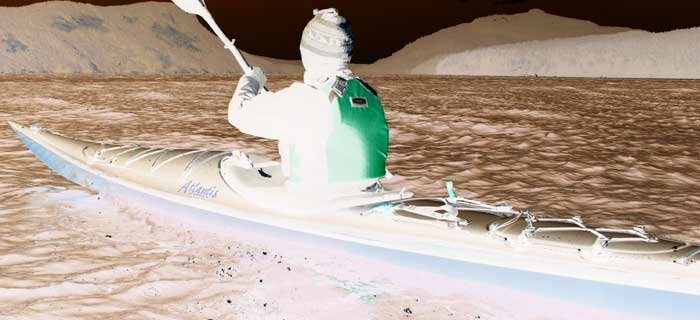
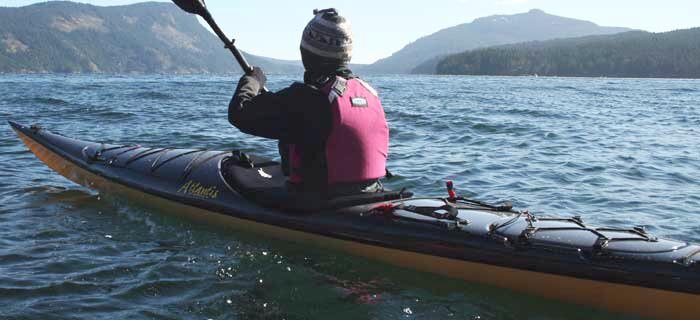
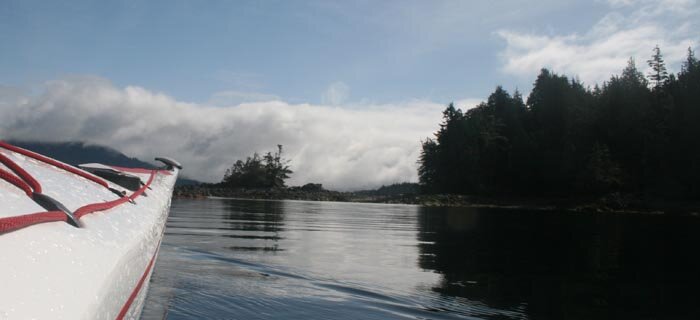
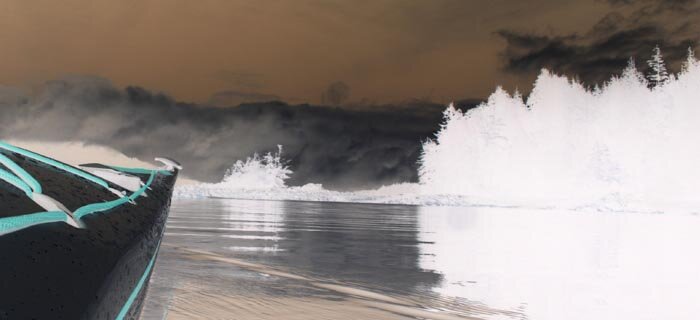
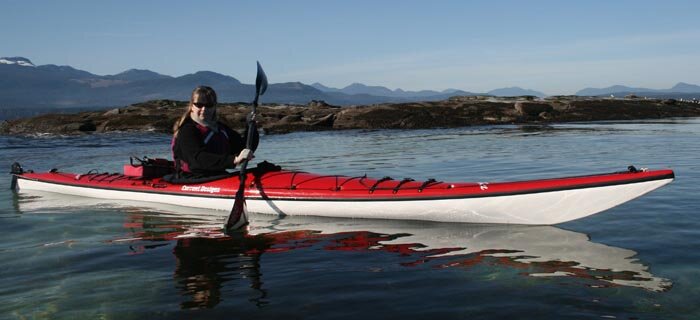

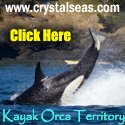
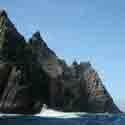

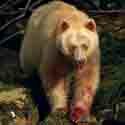











 This site uses valid HTML, CSS and Flash. All content Copyright © 2010 Wild Coast Publishing.
This site uses valid HTML, CSS and Flash. All content Copyright © 2010 Wild Coast Publishing.